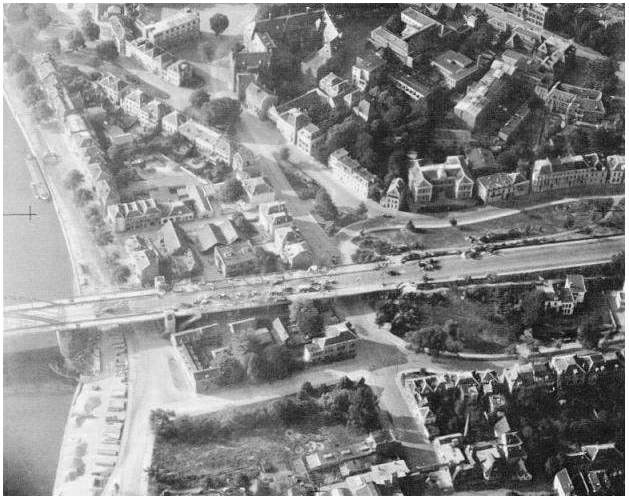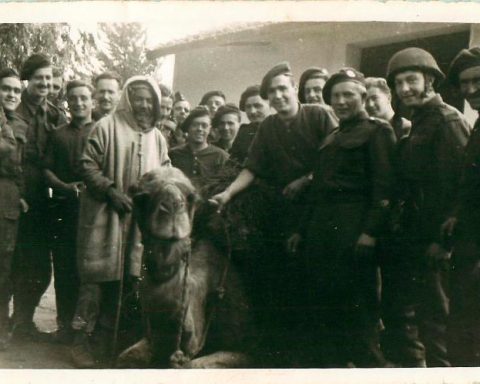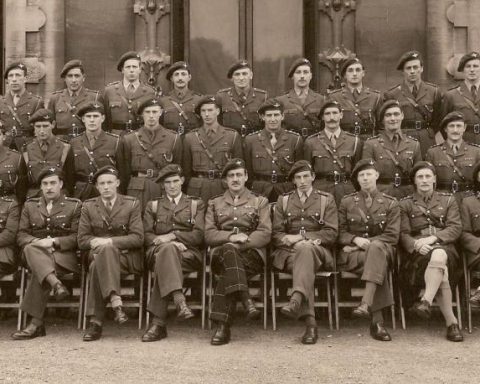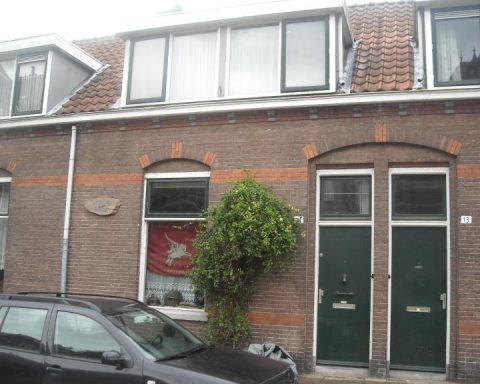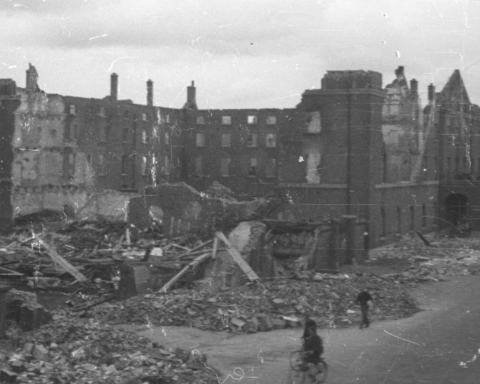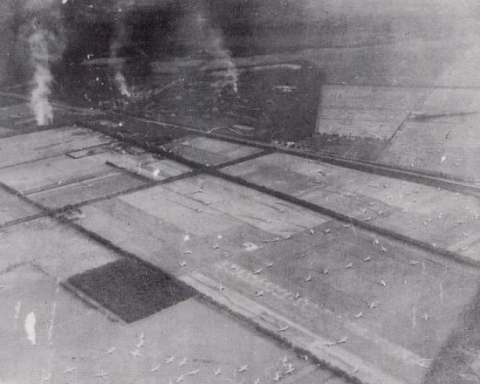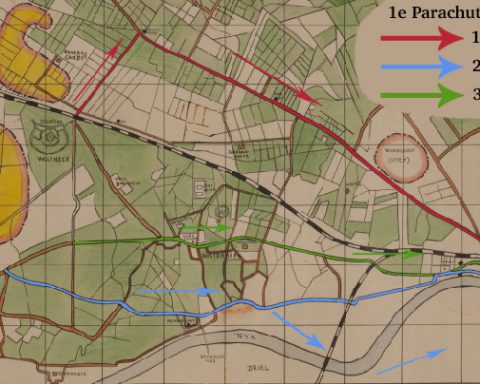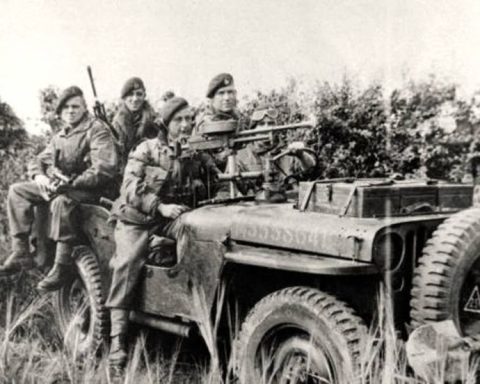A Dutch garbage collector who unsuspectingly made his rounds near the Rhine bridge on the early morning of Monday, September 18, 1944, was probably the first victim of the fighting that would take place that day. His garbage truck was fired upon by British paratroopers as soon as he entered their sector.
The British were surprised to hear the sound of armored cars from the south of the Rhine around 9 a.m. At first the British thought that this was a vanguard of XXX Corps advancing towards Arnhem from the Belgian-Dutch border.
But just out of sight of the British, SS-Hauptsturmführer Viktor Gräbner prepared for a breakthrough through the British positions on the south side of the Rhine bridge. Gräbner was the commander of the reconnaissance battalion of the 9th SS Armored Division. The day before, immediately after the first airborne landings, he had been sent to Nijmegen by General Bittrich to check whether Allied troops had also landed between the Waal and the Rhine.
Gräbner had encountered no troops. He left a number of armored cars at the Waal Bridge in Nijmegen and, just in case, a few cars and troops in Elst. In the morning he drove to the south side of the Rhine Bridge with 22 armored personnel carriers, half-tracks and other vehicles.
The Germans now knew that a number of British paratroopers had managed to occupy the north side of the Rhine Bridge.
Gräbner had been ordered by General Bittrich to break through the British positions at the bridge and then form a barrier line on the west side of Arnhem to stop the remaining airborne troops.
Although the Germans did not know the exact strength of the British at the bridge, the German army leadership was convinced that Gräbner’s reconnaissance battalion would not have many problems with it. The 9th SS- Aufklärung-Abteilung was the strongest unit the Germans had in Arnhem and the surrounding area at that time. Moreover, the British paratroopers with their light weapons would be no match for the German armored cars. People thought.
The Germans soon discovered that the British were much stronger than they had thought. John Frost’s battalion had not only PIAT anti-tank guns, but also a number of 75mm anti-tank guns. These came in handy now.
Standing in the British Humber Staffcar that he had captured in France a month before, Gräbner signaled the 22 vehicles of the column to race across the bridge at high speed around 9:30 am. Gräbner wore a Knight’s Cross around his neck. The day before, a few hours before the British landed at Wolfheze, General Harzer of the 9th SS Armored Division had awarded the Knight’s Cross to Gräbner for bravery in the battle in Normandy.
The column of the 9th SS- Aufklärung-Abteilung crossed the bridge at high speed, but had to slow down on the north side. There were a few burnt-out German trucks that had been fired upon by the British the night before.
The British still had not opened fire. They waited for the moment when the leading German armored cars would drive over the anti-tank mines on the bridge. To the surprise of the British, the mines did explode, but that did not seem to have much effect on the armored cars. The leading four cars from the German convoy drove as quickly as they could down the bridge ramp towards the city center of Arnhem.
With everything they had, the British then opened fire on the wagons that followed. It became a battlefield. No other armored cars from the German column reached the city after that.
After the leading vehicles had left the convoy and blocked the road for the vehicles behind them, one German vehicle after another was eliminated. In his book on the Battle of Arnhem, Martin Middlebrook quotes liaison Bill Jukes who reported on the battle:
“The first vehicle that came close to the houses was hit and then rammed by the second, blocking the road. The rest had no chance.
The occupants, if they were still able, began to emerge from their vehicles in droves. There was such a rain of bullets coming from the windows of the street that no one knew who had shot who.
One German had a guardian angel that day. He slid out of one of the half-tracks on the other side and ran for his life between the houses next to the driveway. There he disappeared from our sight. Someone who is so lucky has the right to live forever.”
Many Germans, however, were not so happy. The soldiers in the open half-tracks were trapped like rats. The British could easily throw grenades into the armored cars from their positions. Every shot from the British was successful.
Lieutenant Harvey Todd: “Several German infantry tried to cross the bridge, but from my observation post I could not miss. Killed six trying to get over the roadblock along the bridge railing. Then someone noticed me. A sniper’s bullet came through the window and bounced off my helmet, but I got glass and wood splinters in my eyes and face.”
From the roof of his headquarters near the bridge ramp, Colonel Frost had a clear view of the carnage on the bridge. Frost himself did not shoot.
Frost: “A commander should not participate in a firefight. His best weapon is binoculars.”
Charred bodies
The fighting lasted about two hours in total. Almost the entire column that had crossed the bridge had been stopped and destroyed by the British. The number of Germans killed in the attack is estimated at around seventy.
One of the victims was Viktor Gräbner. Witnesses saw Gräbner climb out of his captured armored car during the battle to get away from the chaos. The German commander was probably shot and then burned near one of the burning German vehicles. Gräbner’s body was never identified among all the other charred bodies.
General Bittrich stated after the war that he never expected that the British paratroopers at the bridge would be able to shoot down an entire column of armored vehicles.
“The opponent had managed to reinforce his battle group at the road bridge that night with heavy weapons,” he wrote in his battle report.
By the way, Frost’s battalion had all the anti-tank weapons with them the night before when they occupied the road bridge around 8 p.m.

